三月おひな祭り
3月1日(金)午前11時より、宝鏡寺本堂にて四年振りに開催いたします。
本年は白拍子に舞(正式には数ふ)を奉納していただきます。
 Grand Entrance of Hokyo-ji
Grand Entrance of Hokyo-ji
Hokyo-ji, with the honorific mountain name of “Seizan,” is an independent Imperial Convent of the Rinzai Sect of Zen Buddhism. It has been called the “Dodo-no-Gosho (Dodo Imperial Palace),” because of its close connection with the Imperial Household. The Convent was founded by Abbess Karin Egon, the 6th Abbess of Keiai-ji, who was also a daughter of Emperor Kogon in the 14th century.
The principal image of worship is a statue of Sho Kannon (the sacred Bodhisattva of compassion) which was said to be caught in a fishing net off the coast of Ise. The statue held a sacred mirror, and was kept at the Imperial Palace during the Oan period (1368-1375). Later, Emperor Gokogon granted the statue to Abbess Karin Egon, who established Hokyo-ji with the Sho Kannon as its principal image. He also accorded her the temple name “Hokyo-ji (lit.,“Temple of the Sacred Mirror”),” in tribute to the statue’s origins.
Keiai-ji was established by Abbess Mugai Nyodai during the Koan period (1278-1287). After the Nanboku-cho period (1336-1392), it became the highest-ranked Rinzai Zen Convent among the “Five Great Zen Convents” in Kyoto and enjoyed great prosperity under the auspices of the Ashikaga Shogunate government. However, the temple became defunct because of the fires during the Onin Civil War (1467-77) and the decline of the Ashikaga family. Since the induction of the 6th Abbess Karin Egon, who was also founder of Hokyo-ji, the residing abbesses of Hokyo-ji served as abbesses of Keiai-ji. Thus, the elite linage of Keiai-ji was inherited by Hokyo-ji, and continues to this day.
Upon the occasion in 1644 of the induction of the 20th Abbess Kugon Risho, who was a daughter of Emperor Gomizuno-o, Hokyo-ji was accorded an imperial purple robe (“shi-e”) by the Emperor, and the relationship with the Imperial Household was reinforced. Since then, the temple became an Imperial Convent where Imperial princesses served as the successive generations of its abbesses.
Most of the original buildings were burned down during the “Great Kyoto Fire of Tenmei” in 1788. The six buildings such as the Shoin residential suites (reconstructed in 1798), the Main Hall, the Great Gate, the Amida-do (Amitabha Hall), the Grand Entrance and the Messengers’ Room were reconstructed later, all of which have been designated as tangible cultural properties of Kyoto City.
In particular, the Main Hall was reconstructed in a six-room-hojo (abbess quarters) style in 1827, and the sliding doors of the Shoin residential suites have paintings by noted painters of the Maruyama School, including Okyo Maruyama, Oshin Maruyama and Kokei Yoshimura.
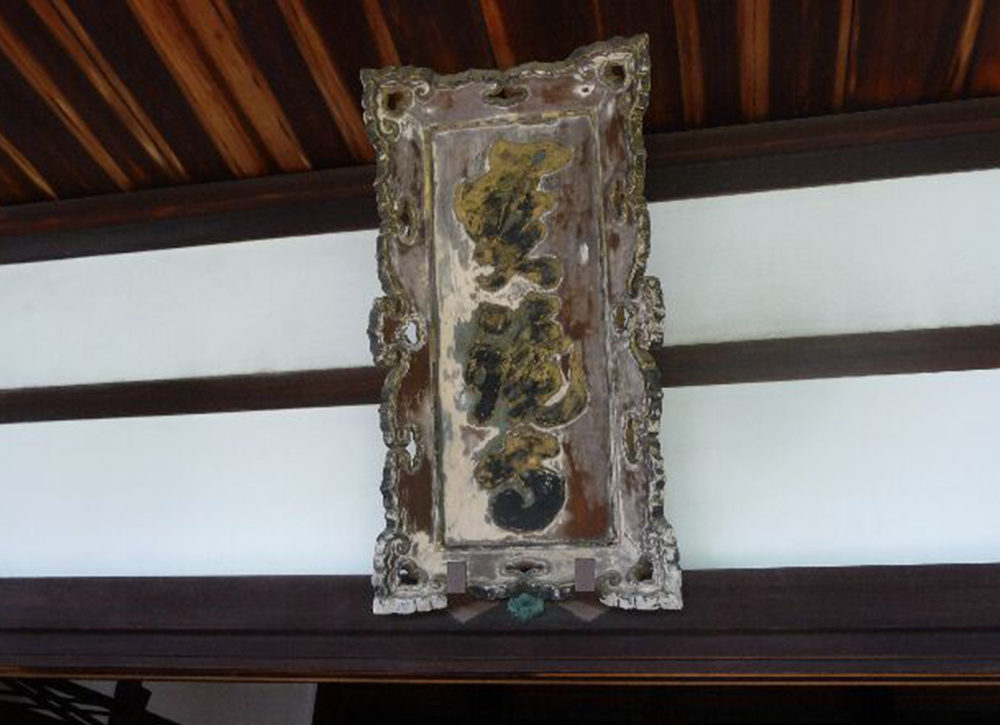 Framed tablet / Calligraphy by the 22nd Abbess Tokugon Riho (a.k.a. Honkakuin)
Framed tablet / Calligraphy by the 22nd Abbess Tokugon Riho (a.k.a. Honkakuin)
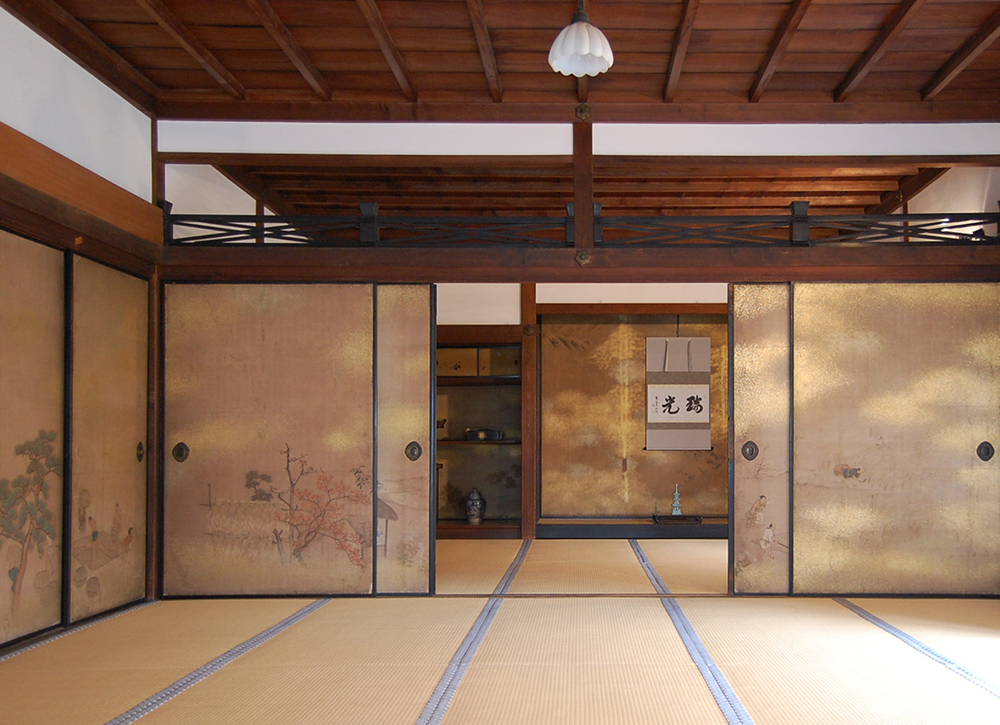 Sliding door painting in the Shoin residential suites; “Painting of Cultivation in Four Seasons” by Oshin Maruyama
Sliding door painting in the Shoin residential suites; “Painting of Cultivation in Four Seasons” by Oshin Maruyama
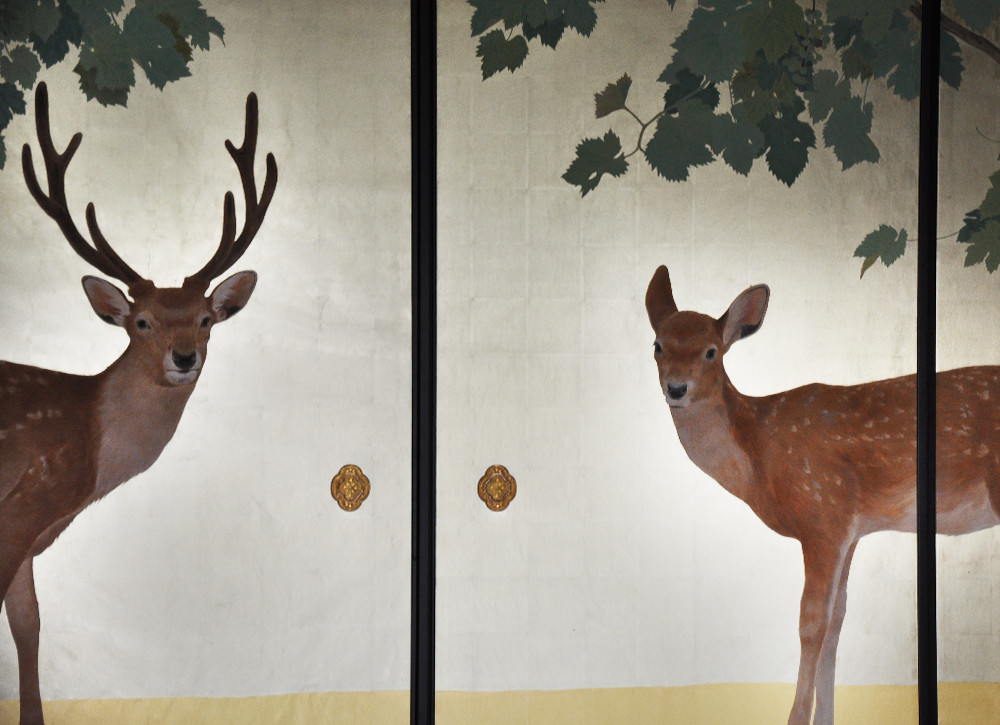 Sliding door painting in the Main Hall; “Grapes and Deer” by Yukikazu Kawamata
Sliding door painting in the Main Hall; “Grapes and Deer” by Yukikazu Kawamata
 Yusoku-bina Hina Dolls (Noshi-bina Hina Dolls)
Yusoku-bina Hina Dolls (Noshi-bina Hina Dolls)
Imperial Convents in Kyoto and Nara possess many dolls, since residing princess-nuns often received dolls from their respective emperor-fathers from season to season. Hokyo-ji Imperial Convent is no exception.
In particular, the 24th Abbess Reigen Rikin received extremely precious dolls from her father, Emperor Kokaku, including 3 pairs of Yusoku hina dolls and red-dressed Shojo dolls. Because of a fervent request from both within and outside the convent, the convent started to hold biannual doll exhibitions in spring and autumn since autumn 1957, where these precious dolls are placed on display for viewing by the public.
Later, memorial services for dolls (and the deceased related to such dolls) were started to be held among the relevant parties. In autumn 1959, a doll mound was established in the precincts of Hokyo-ji, as a means of consoling the spirits of old discarded dolls and those who were involved in making them.
At present, a grand memorial service for dolls is held every year on October 14th, where a dance performance by a Shimabara Tayu (courtesan) clad in a gorgeous costume and performance of traditional Japanese musical instruments are held in dedication in front of this mound.
Many dolls and stuffed animals were brought here throughout the year, and the temple began accepting such dolls every day. Because of this, the temple has become fondly known in Kyoto as the “Temple of the Dolls.”
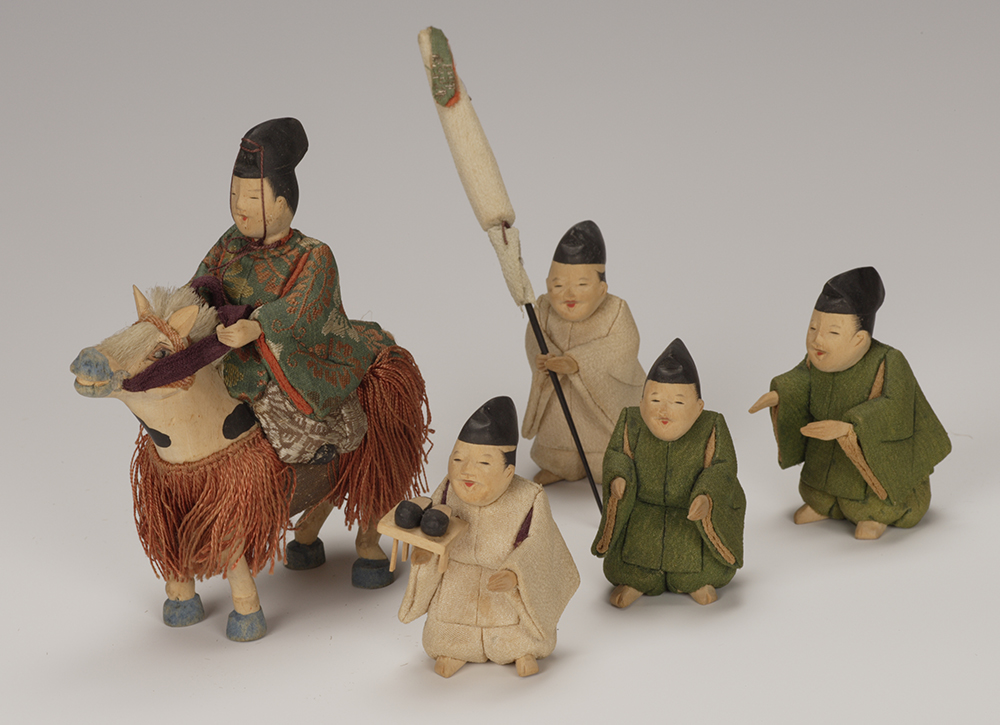 Kamo Dolls・Procession of Aristocrats (the late Edo period)
Kamo Dolls・Procession of Aristocrats (the late Edo period)
 Sanbaso Auspicious Dance
Sanbaso Auspicious Dance
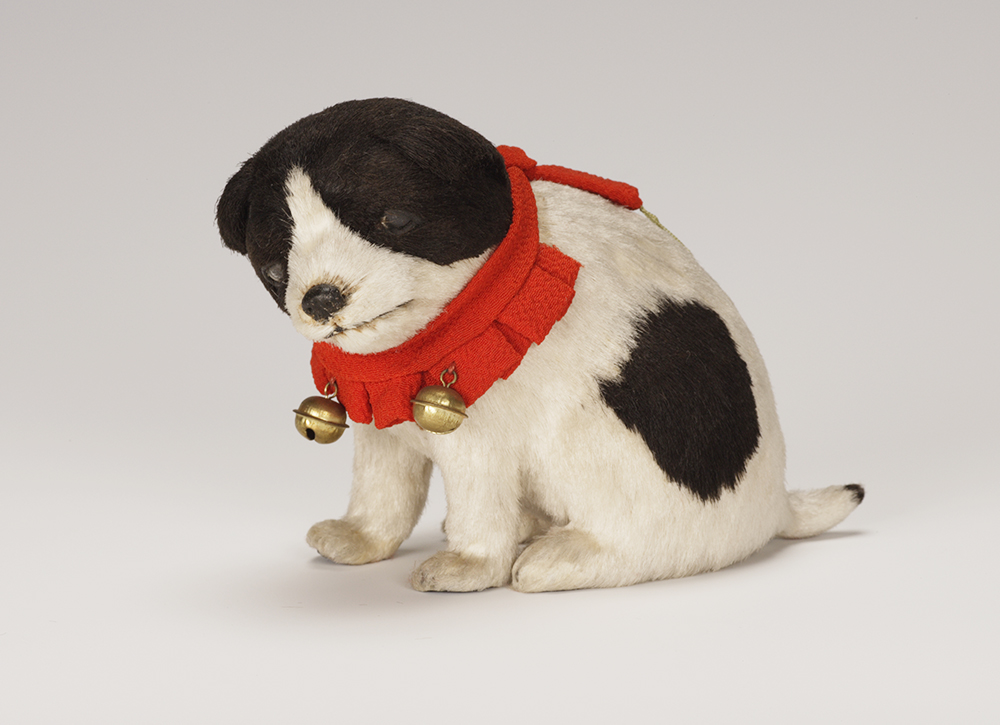 Puppy Doll (coated with real hair) (the late Edo period)
Puppy Doll (coated with real hair) (the late Edo period)
Also called the “Chokusaku-do (Imperial Chapel),” the Amida-do (Amitabha Hall) was relocated to this temple when a standing statue of Amida Buddha (Amitabha) made by the Emperor was transferred to the temple from the Imperial Palace.
After the anti-Buddhist movement at the beginning of the Meiji period, Hokyo-ji absorbed the adjacent temple, Daiji-in, whose abbess title was concurrently served by the abbess of Hokyo-ji. Because of this, Hokyo-ji started to enshrine the main statues of Daiji-in, including its principal image of worship, the standing statue of Amitabha, a wooden statue of Sukenmonin, and that of Tomiko Hino in nun appearance.